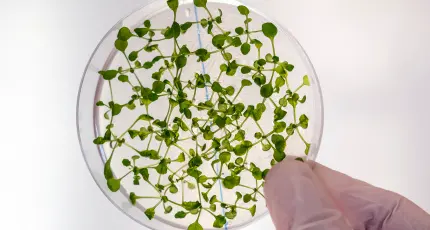Researchers at
MIT have developed a new method for growing plant tissues in a lab
– sort of like how companies and researchers are approaching lab-grown meat. The process would be able to produce wood and fibre in a lab environment, and researchers have already demonstrated how it works in concept by growing simple structures using cells harvested from zinnia leaves.
This work is still in its very early stages, but the potential applications of lab-grown plant material are significant, and include possibilities in both agriculture and in ruction materials. While traditional agricultural is much less ecologically damaging when compared to animal farming, it can still have a significant impact and cost, and it takes a lot of resources to maintain. Not to mention that even small environmental changes can have a significant effect on crop yield.
Forestry, meanwhile, has much more obvious negative environmental impacts. If the work of these researchers can eventually be used to create a way to produce lab-grown wood for use in construction and fabrication, in a way that’s scalable and efficient, then there’s tremendous potential in terms of reducing the impact of forestry globally. Eventually, the team even theorizes you could coax the growth of plant-based materials into specific target shapes, so you could also do some of the manufacturing in the lab, by growing a wood table directly for instance.
There’s still a long way to go from what the researchers have achieved. They’ve only grown materials on a very small scale, and will look to figure out ways to grow plant-based materials with different final properties as one challenge. They’ll also need to overcome significant barriers when it comes to scaling efficiencies, but they are working on solutions that could address some of these difficulties.
Lab-grown meat is still in its infancy, and lab-grown plant material is even more nascent. But it has tremendous potential, even if it takes a long time to get there.
 简体中文
简体中文

